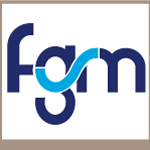| 008MFIFM4 | International Finance |
|---|---|

|
This class introduces international finance and focuses on topics related to the foreign exchange markets, the impact of economic policy on exchange rates, and the nature of foreign exchange risk. The international foreign exchange market consists of several national markets. There are three levels of the foreign exchange market operations: Retail trading, Wholesale interbank trading and international trade. The first part of the course briefly introduces the historical evolution of the trade between nations, the different parties involved, and the real concerns of international trade that arise from financial and trading relations between nations. The second part discusses the foreign exchanges markets, their functions, and the participants in the foreign exchange markets. The third part discusses the foreign exchange rate; the foreign exchange systems; and the direct, indirect, and cross exchange rates. The fourth part discusses partially the derivatives for currency markets such as forward markets, currency swaps, and options. It also discusses hedging, speculation, and arbitrage in the foreign exchange markets. Temps présentiel : 35 heures Charge de travail étudiant : 70 heures Méthode(s) d'évaluation : Projets, Analyse d'article Référence : |
| Ce cours est proposé dans les diplômes suivants | |
|---|---|
| Master en gestion et management - option : gestion des actifs financiers Master en gestion et management - option : finance |

 Faculté de gestion et de management
Faculté de gestion et de management